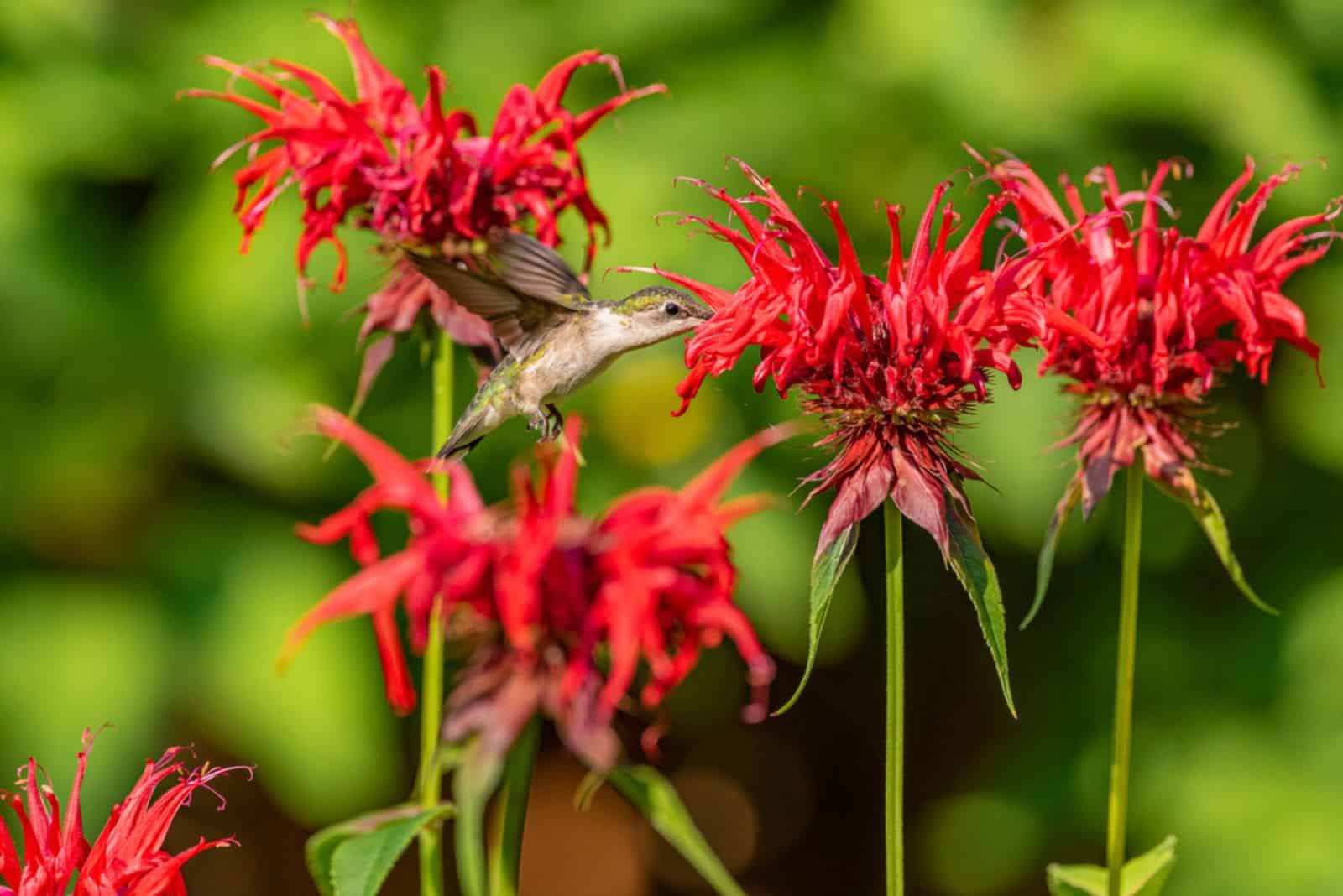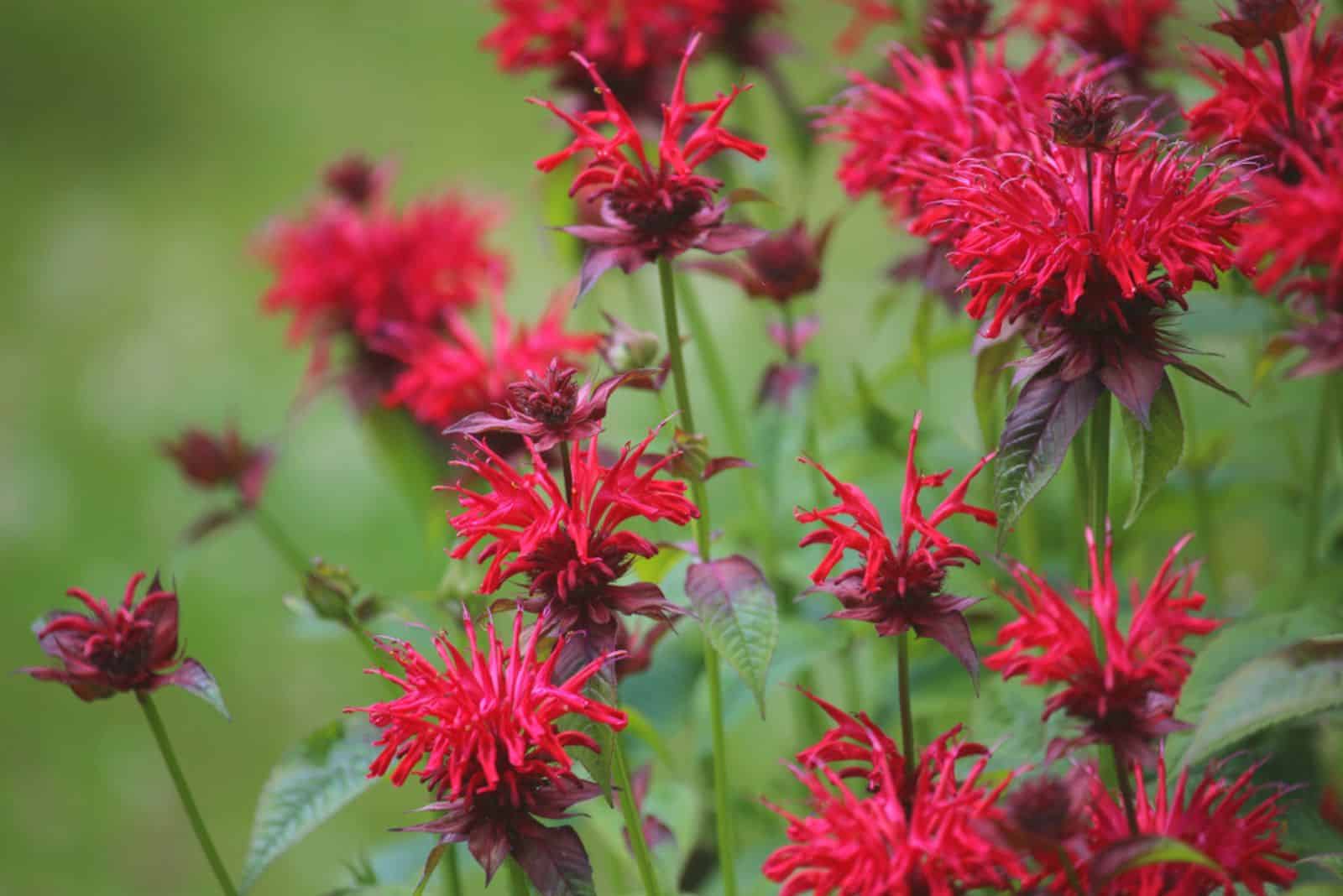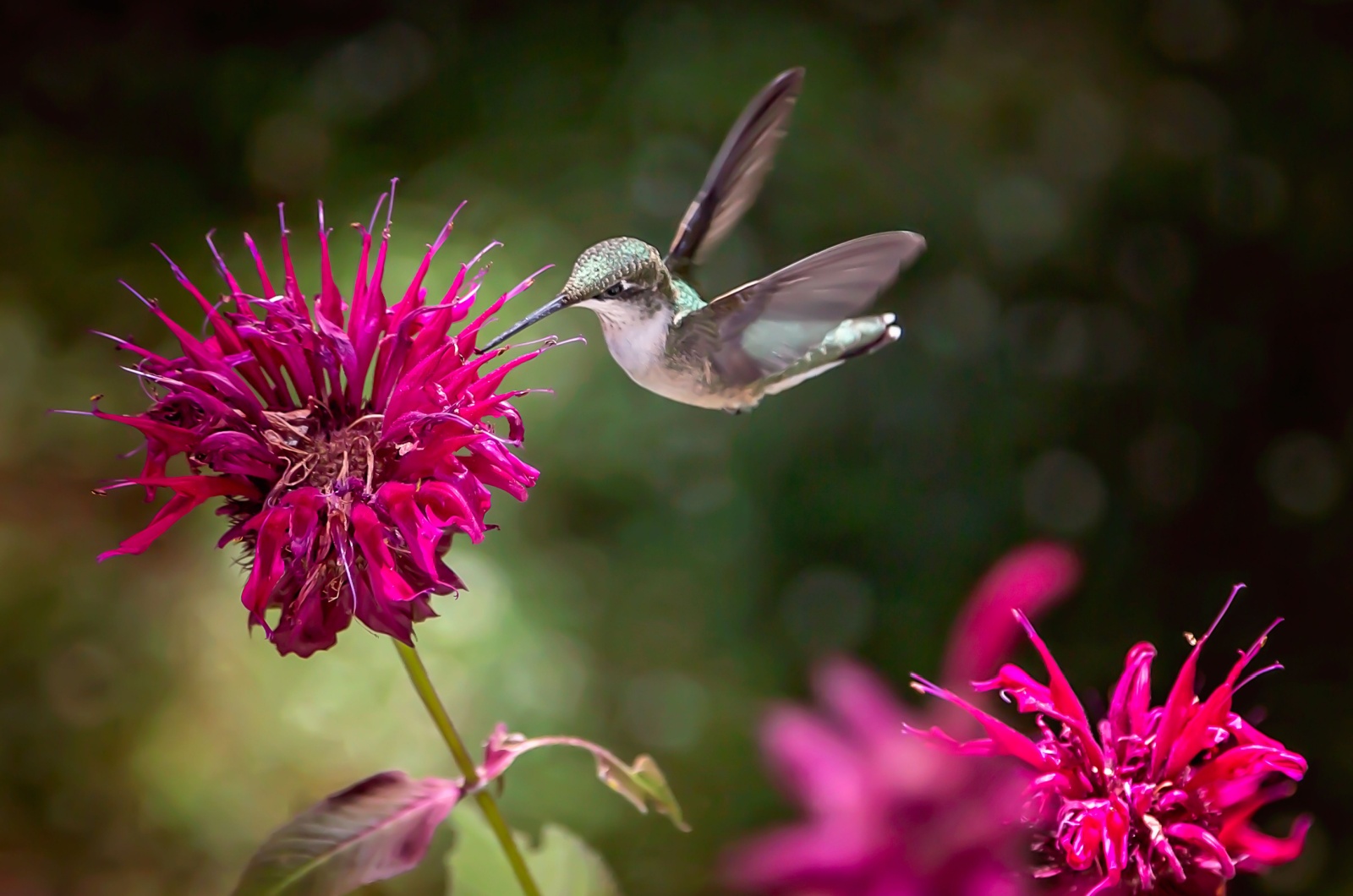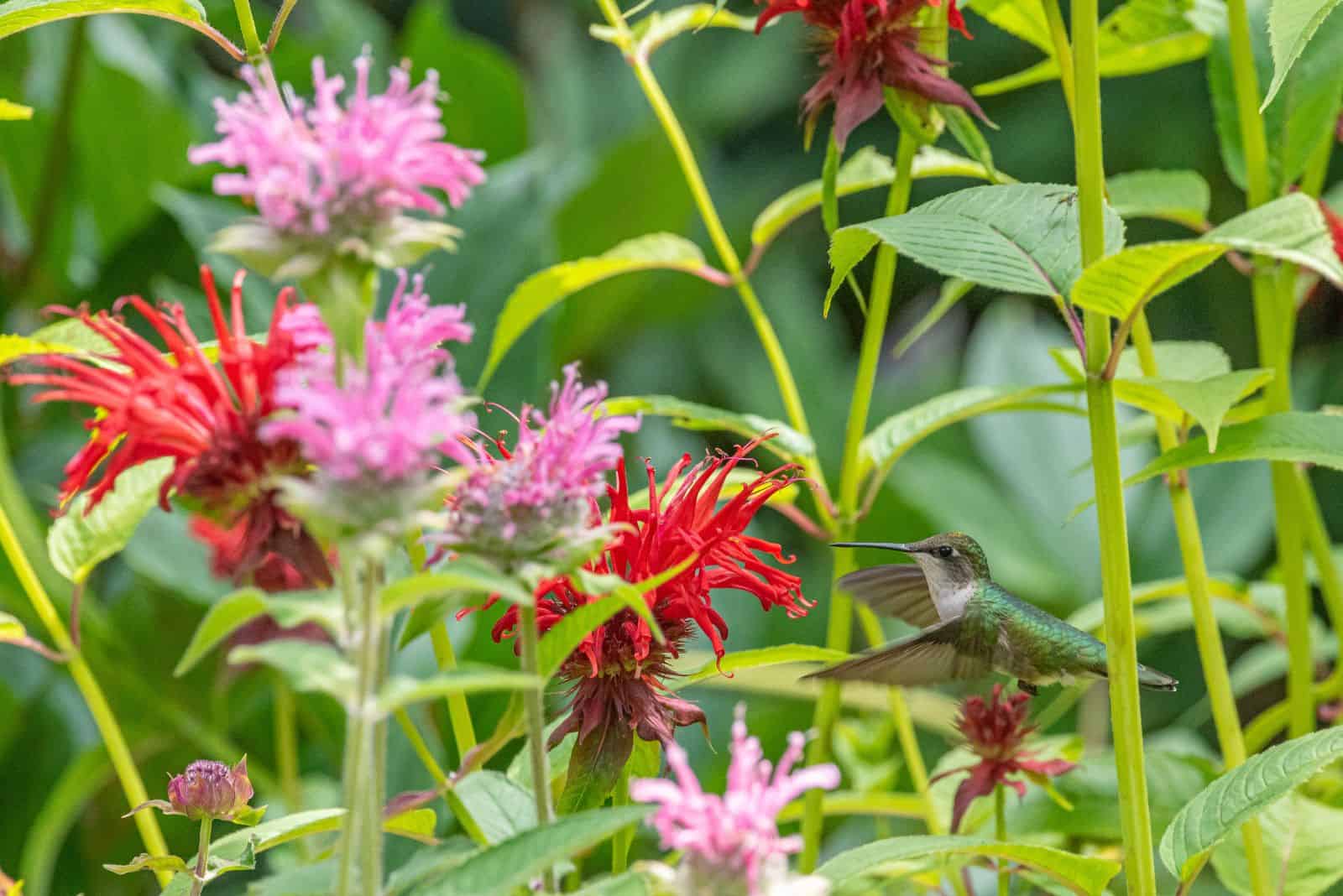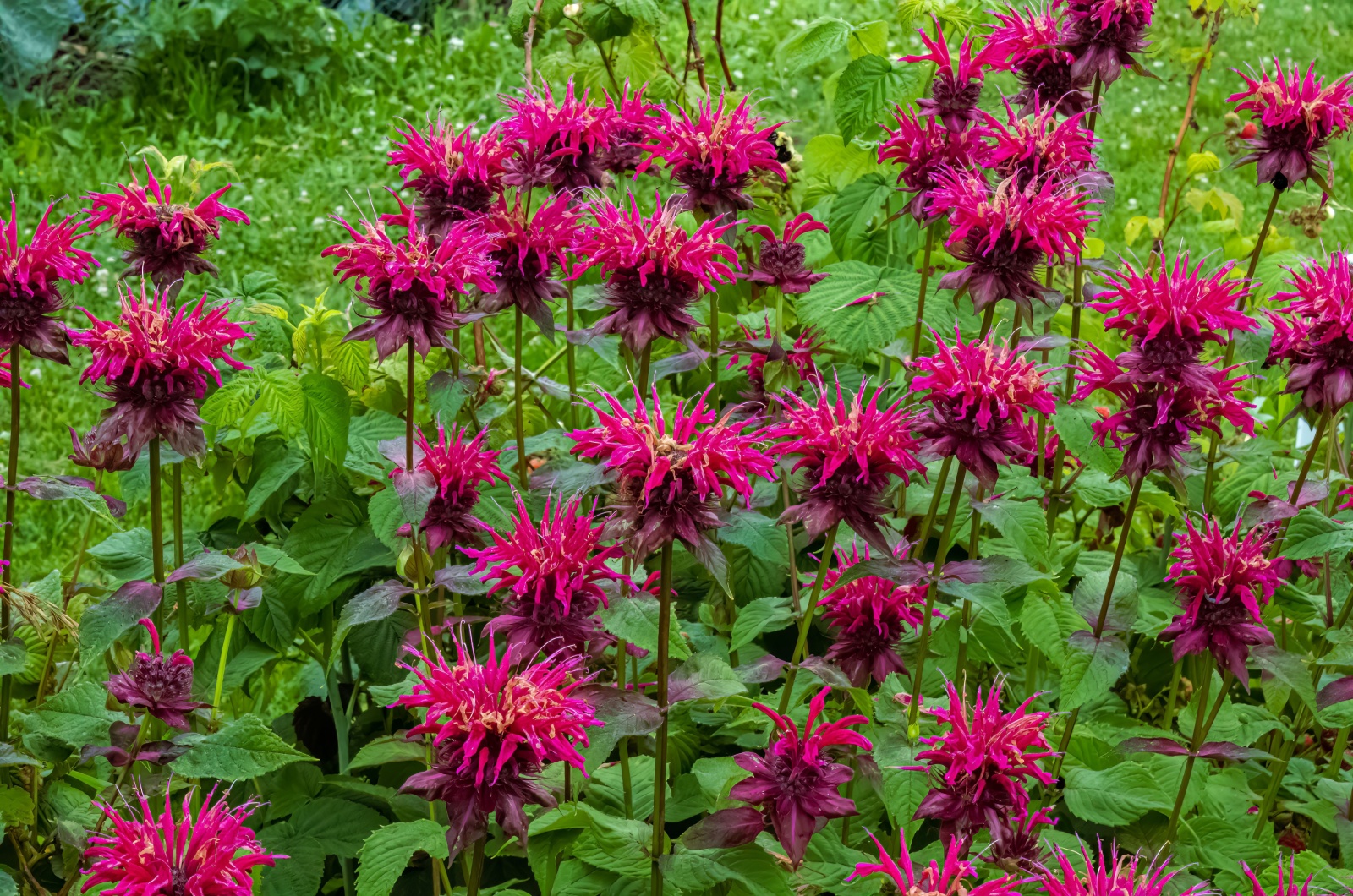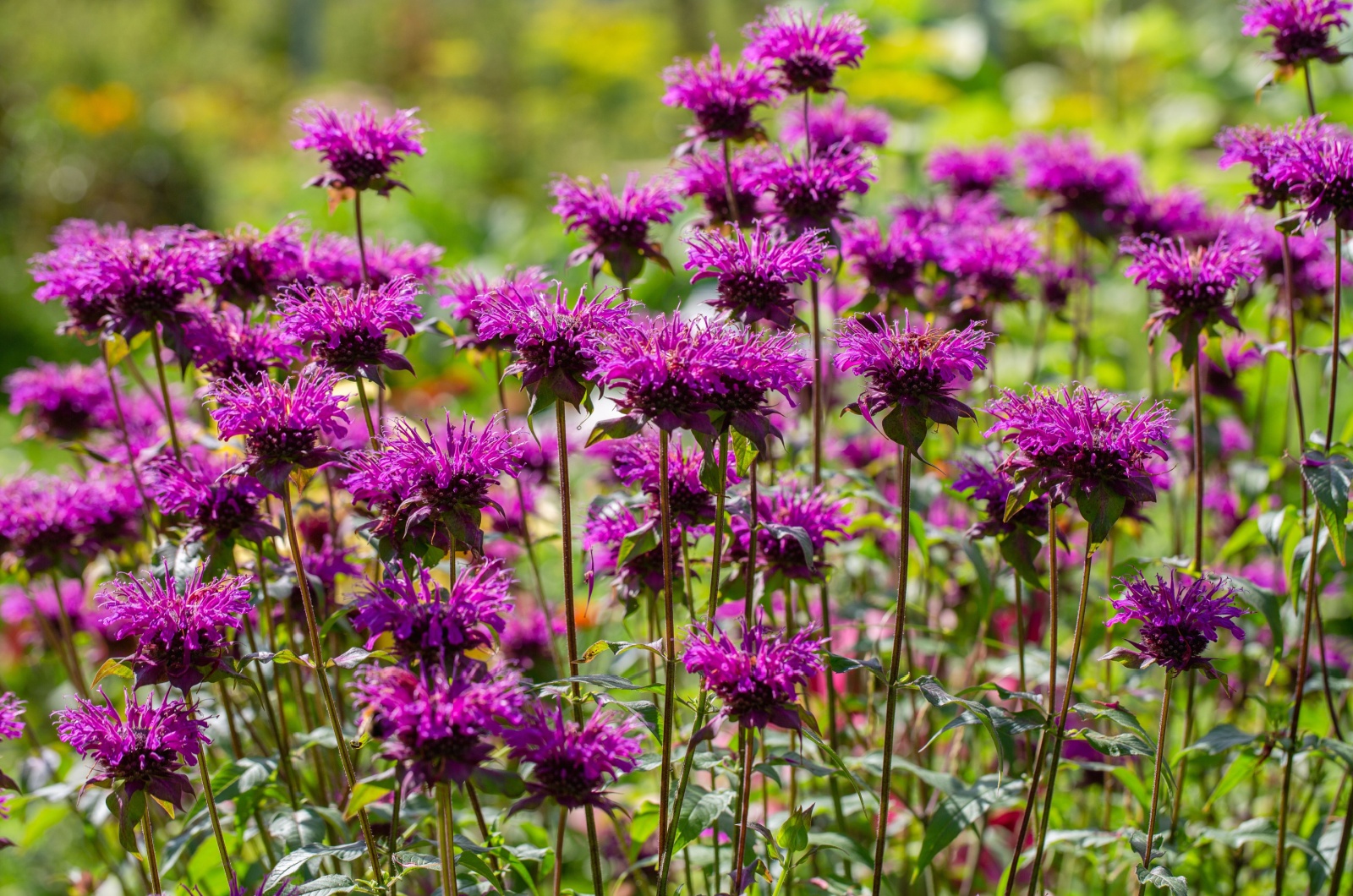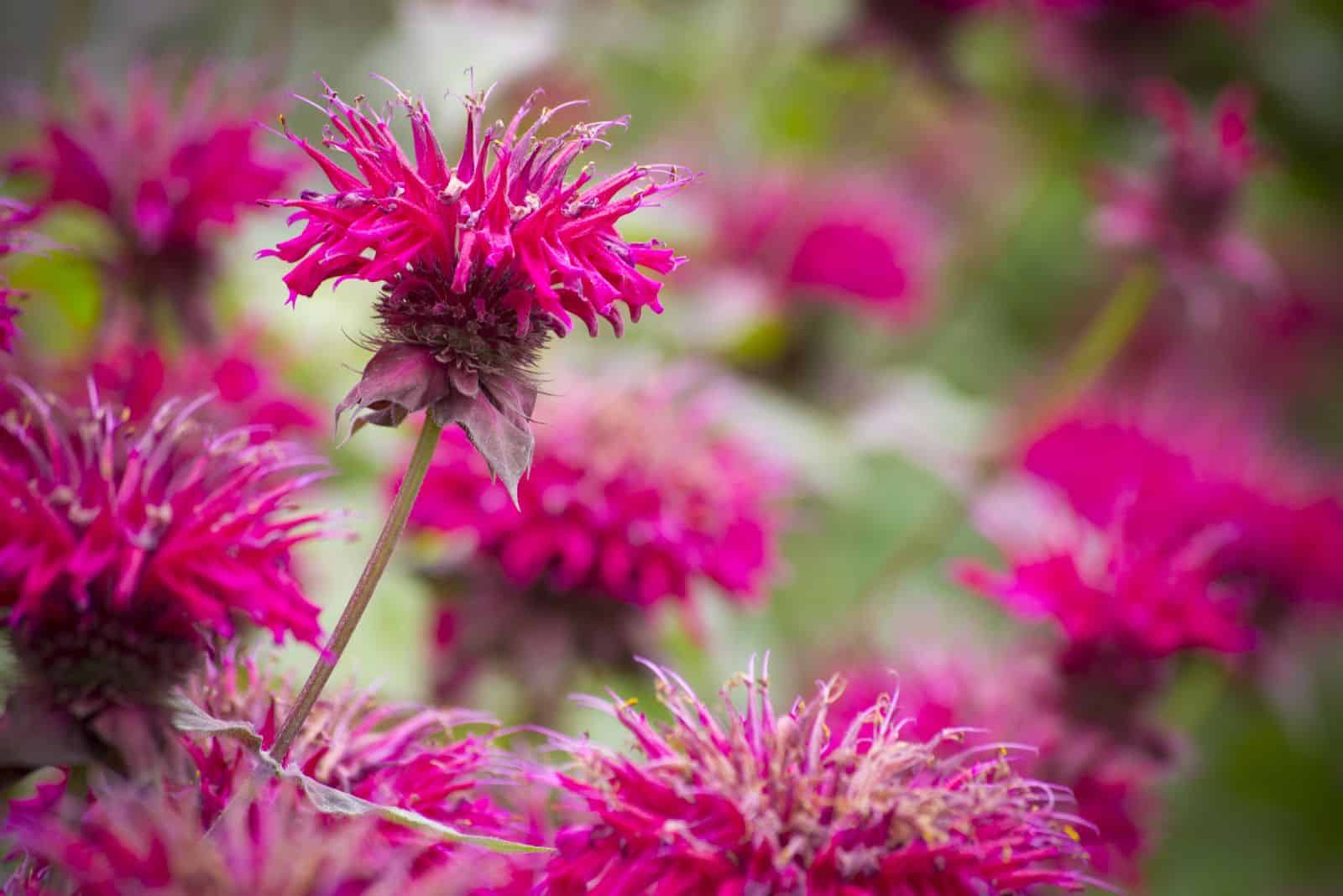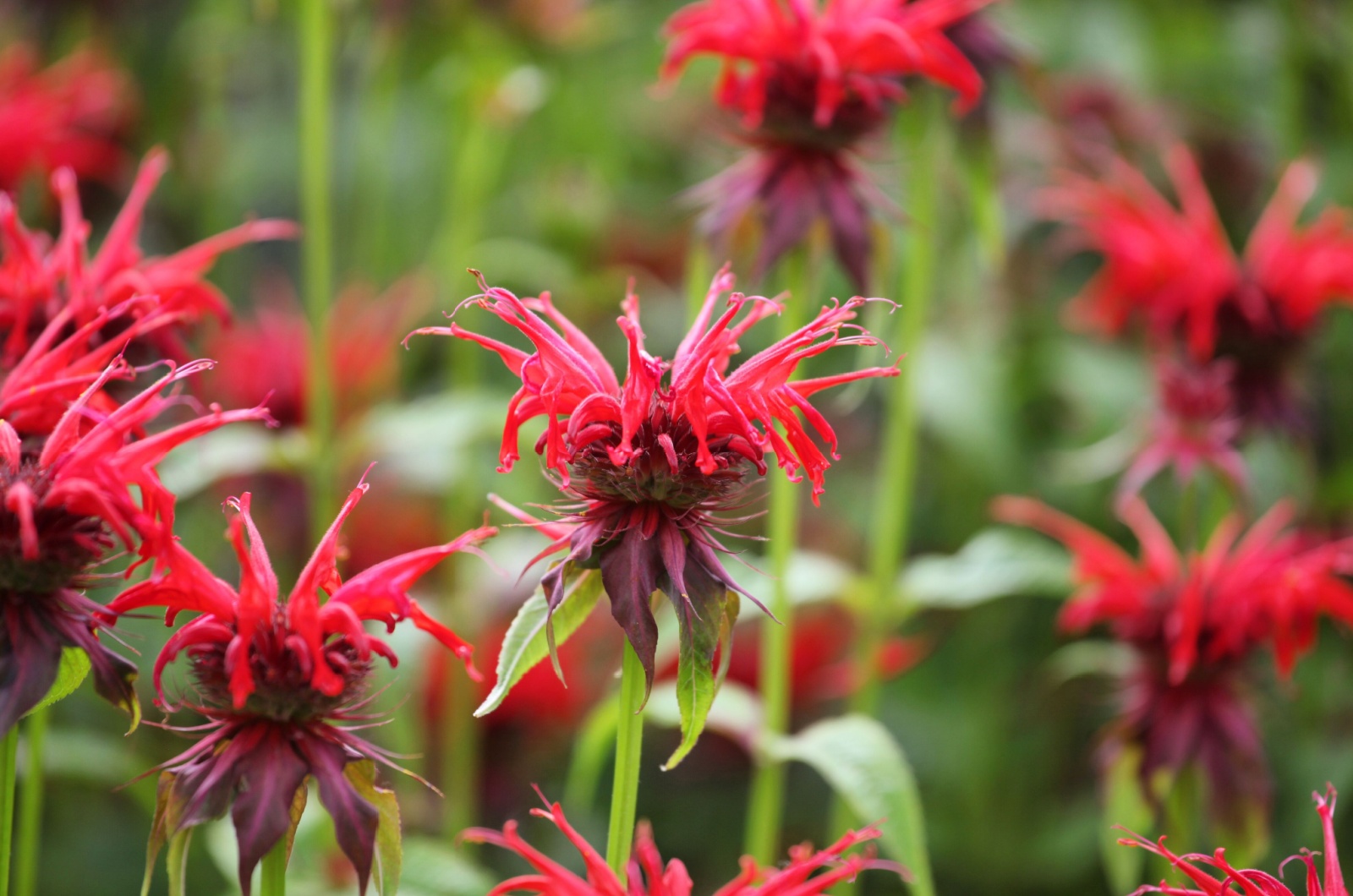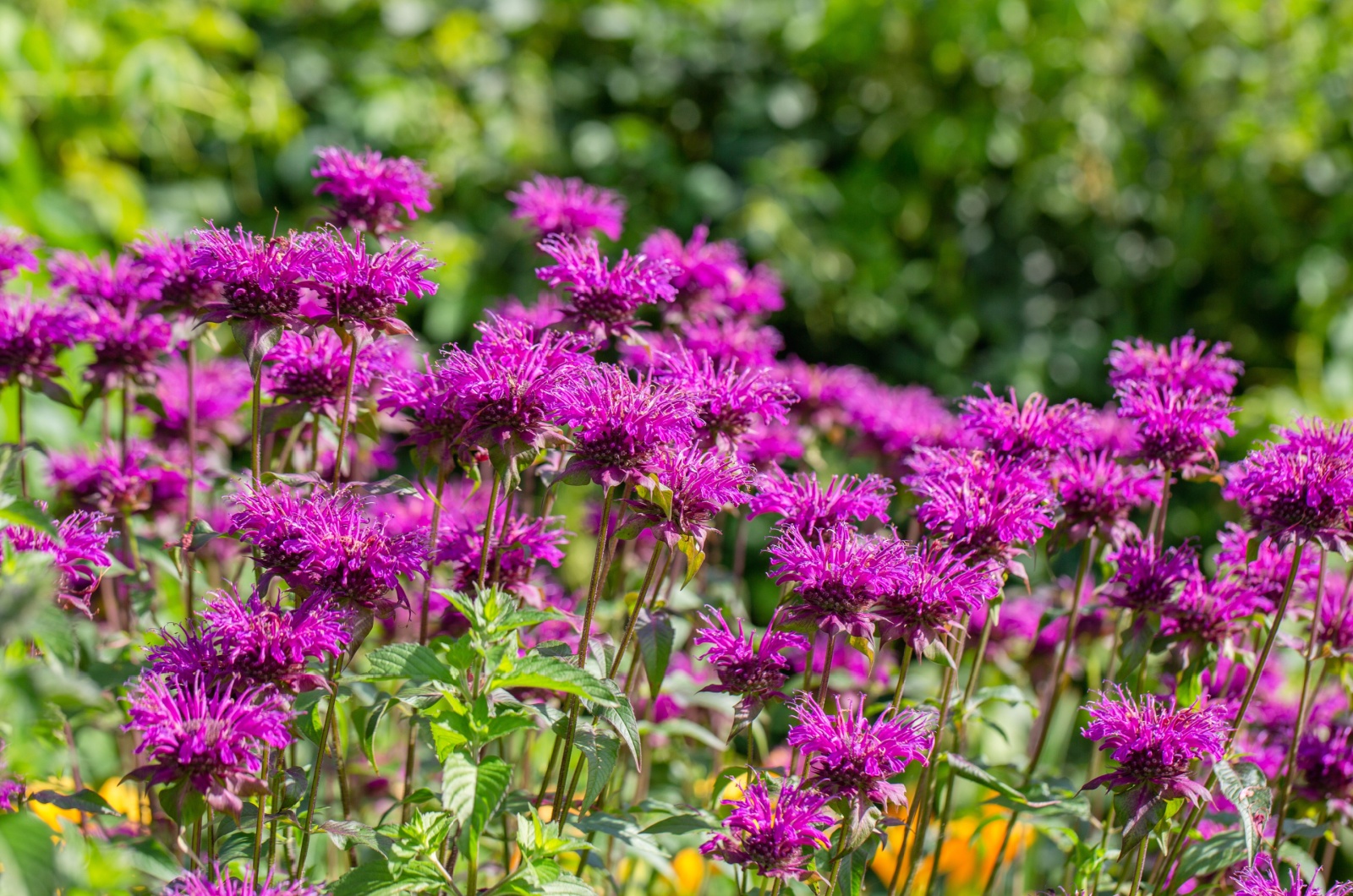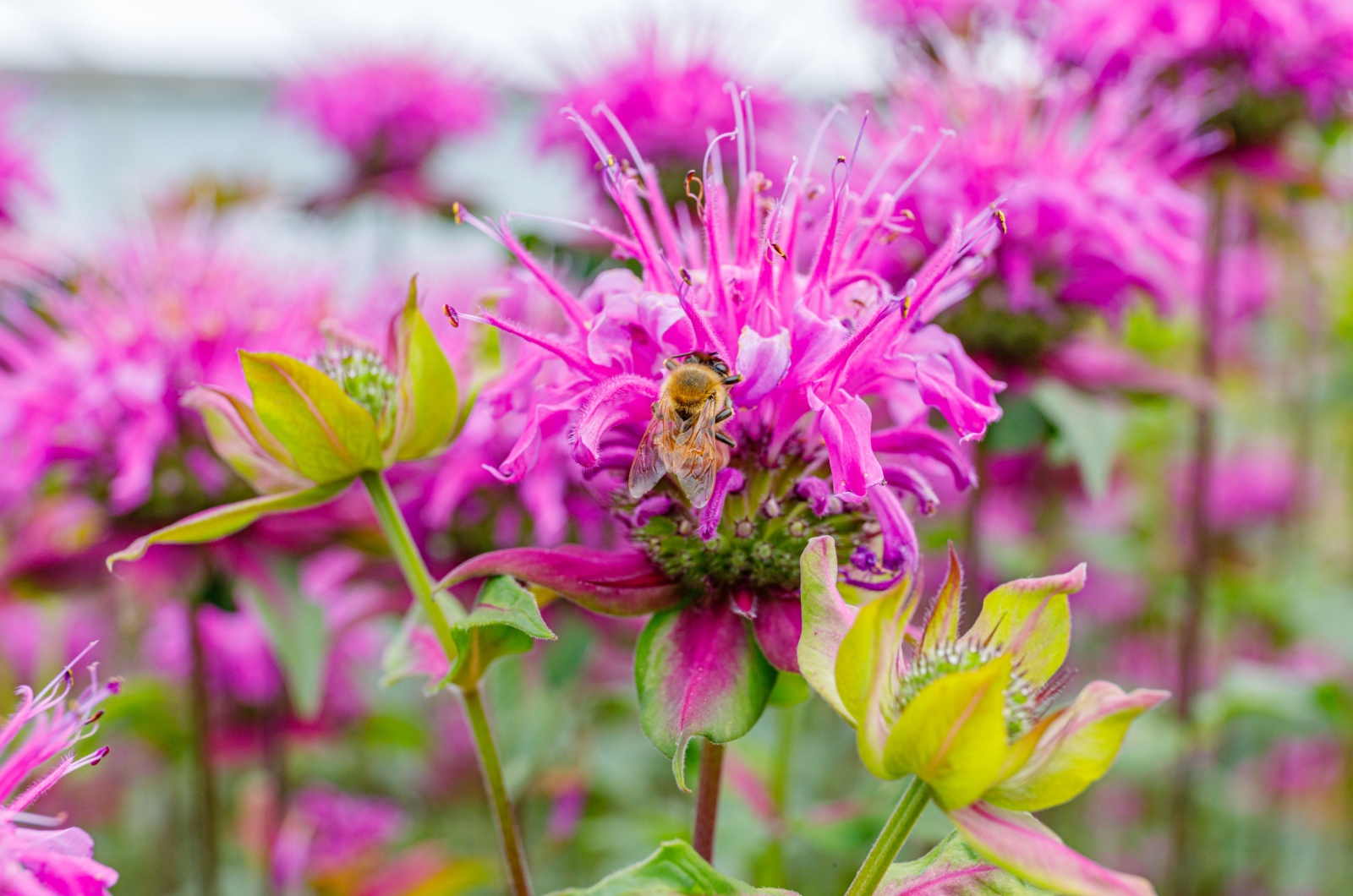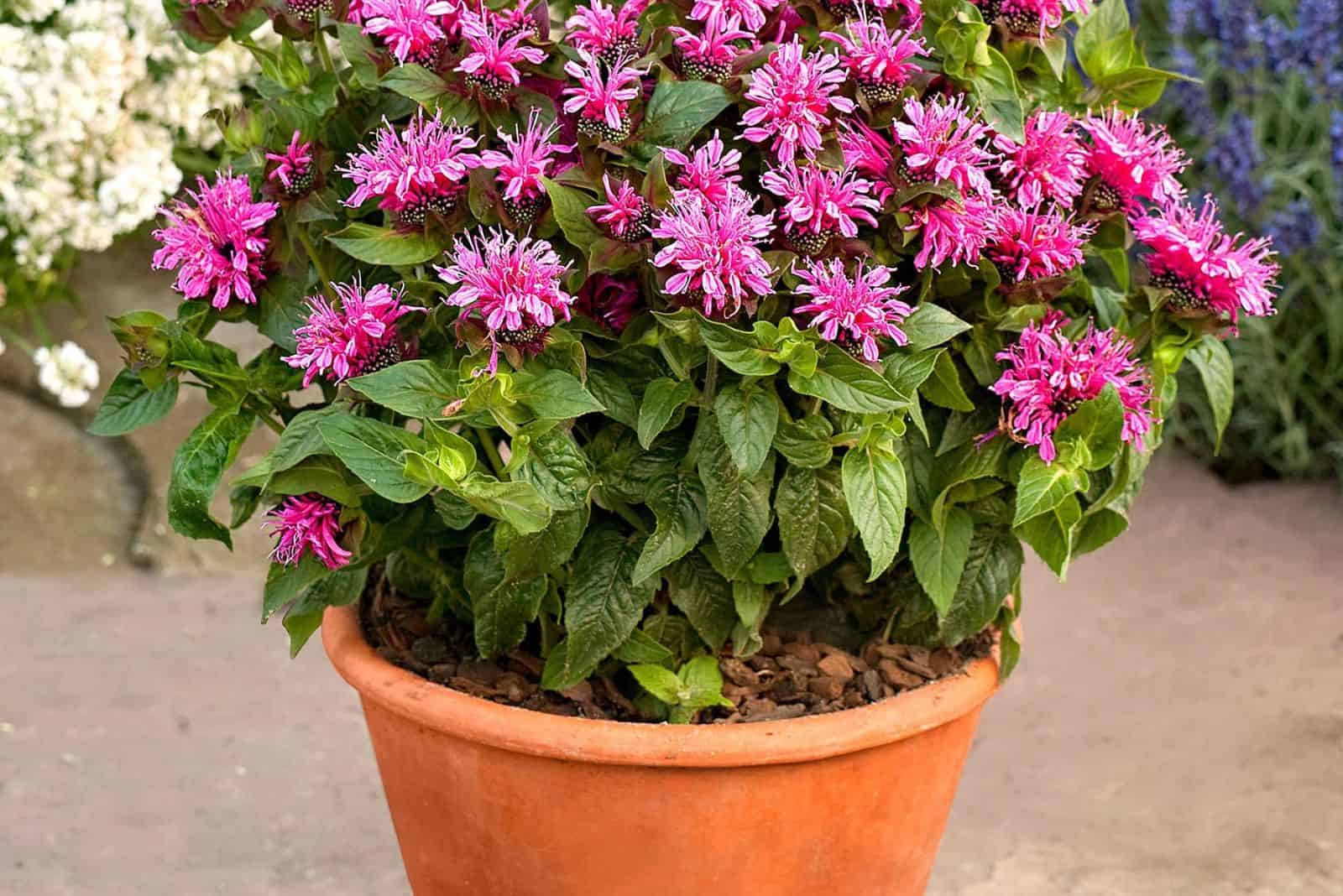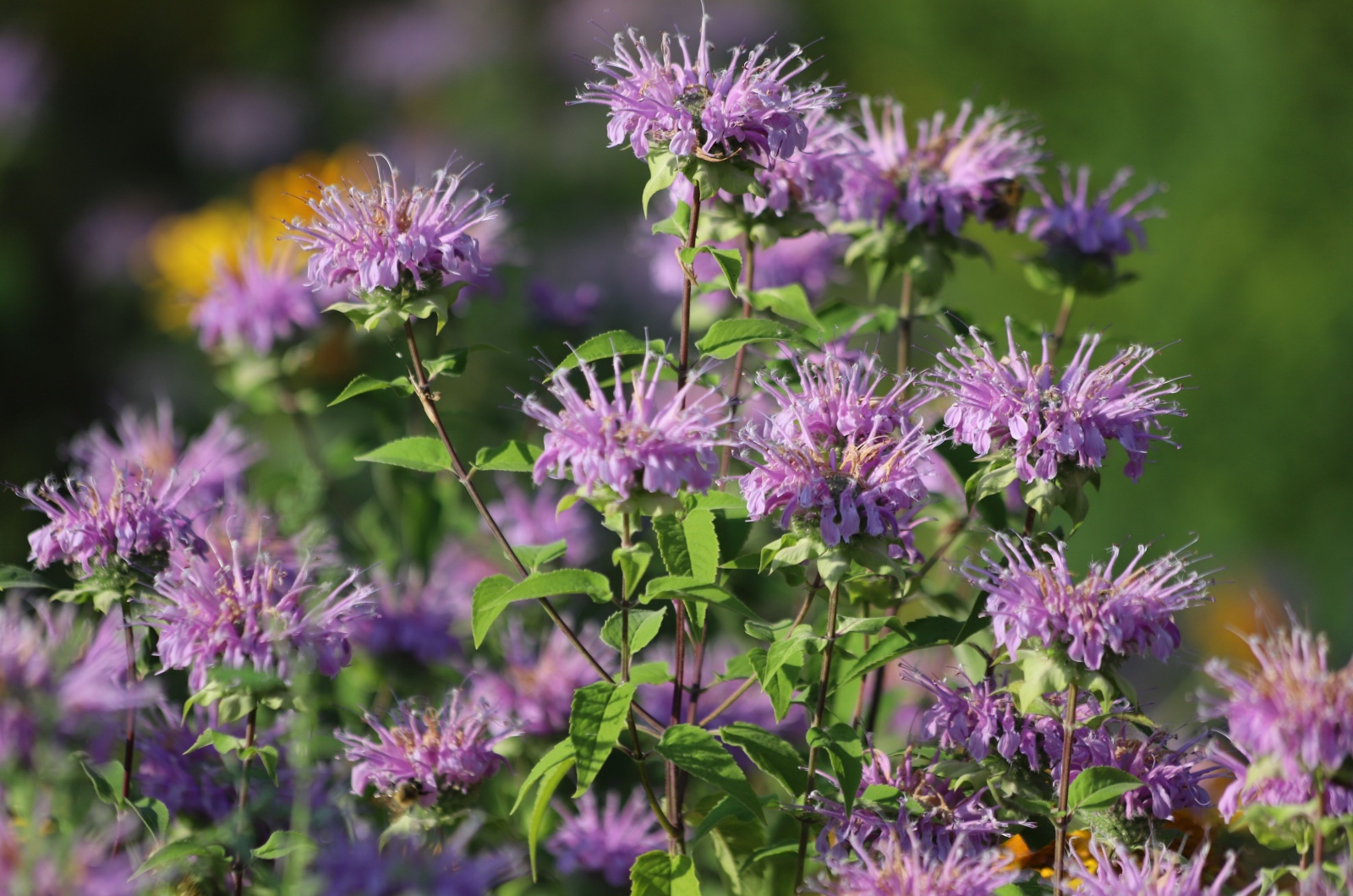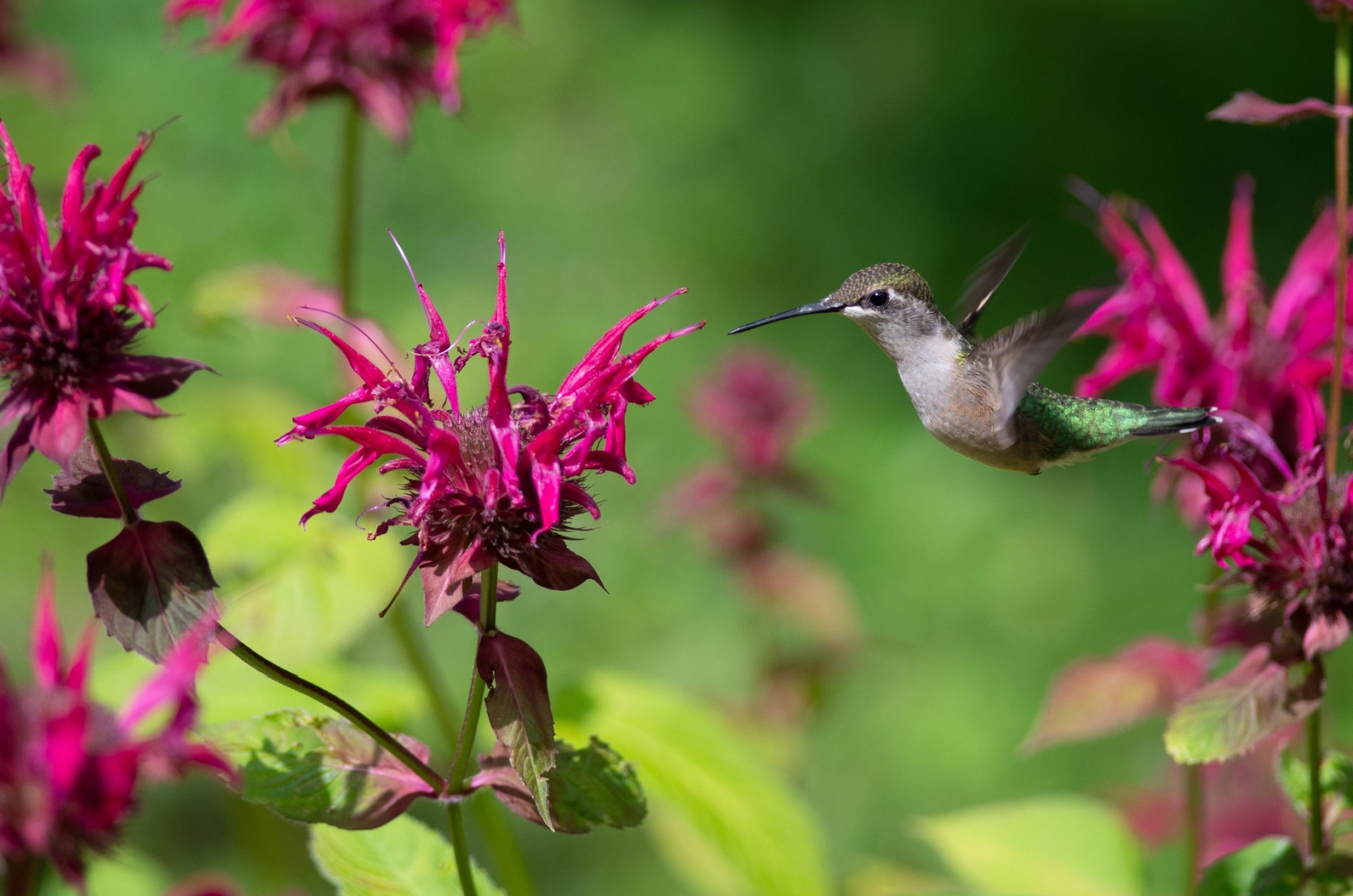Does your backyard need a plant that looks captivating and is easy to grow? Look no further than Bee balm.
This natural treasure will make a perfect addition to your outdoor space. If its looks and care requirements don’t convince you to get it, I’ll show you more reasons why Bee balm should be grown in every backyard.
Let’s see what this plant has to offer!
1. It’s A Native Plant
Bee balm is a wildflower and you must be wondering what makes it better than other common wildflowers. Well, one of the most important things to realize is that this is a native plant.
I always recommend growing native plants because, first, they’re well adapted to our environment, which means you don’t have to put in a lot of effort to ensure all the conditions it requires.
Second, these plants don’t need much water and can survive if you just let the rain do all the work.
And third, these plants are resistant to pests and diseases so there’s no need to use pesticides.
If you have to choose between native and non-native species, always go with native, no matter which one looks more attractive to you.
2. Pollinators Love It
Plants that attract hummingbirds and butterflies are always welcome to our gardens. Well, Bee balm is one of the best plants for this purpose.
Its crown-like flowers are among the favorites of pollinators, making it a perfect candidate for every backyard.
We should be aware that the number of pollinators is decreasing more and more, so one of the things we can do as individuals is attract them to our gardens.
3. It’s Easy To Maintain
Well, I dare say that Bee balm is super easy to maintain and you can keep it healthy and happy even if you are new to gardening.
There’s no need to fertilize this magnificent plant. Simply plant it in a free-draining soil type, ensure full sun or partial shade, and it will reward you with colorful blossoms as soon as the summer approaches.
What’s amazing about this plant is that it produces blossoms even with a bit of neglect, which is pretty uncommon for plants.
You can also use it as a companion to pink muhly grass, zinnias, asters, black-eyed Susan plants, and many more. The scent of Bee balm deters pests, making it an excellent companion for plants susceptible to pests.
And guess what? You don’t even need to replant because it’s self-seeding, meaning that it will release seeds in the ground when the flowering season is over.
4. Makes An Excellent Privacy Screen Plant
This plant typically reaches 4 feet tall, which may not seem enough for a privacy screen.
But when planted in borders, it makes an excellent mid-height privacy plant which is often suitable for many growers.
Bee balm is one of the plants that keep deer away, so you don’t have to worry that these cute animals might devour your garden.
5. It’s Versatile
We’ve seen so many great things about Bee balm and how it behaves in gardens. Now it’s time to learn the ways to use this splendid plant.
Every part of the plant is edible, makes an excellent condiment, and can be used in tea.
For instance, if you need a garnish for a salad, Bee balm blossoms will do the job perfectly. Dried blossoms and foliage are used for making aromatic and healthy tea.
Since the blossoms release essential oils, Bee balm is frequently used in hair tonics and perfumery.
The captivating blooms of Bee balm look amazing in flower arrangements.
Tips For Growing Bee Balm
I’ve mentioned a couple of times that Bee balm has low care requirements. This may be confusing to novice gardeners, so I prepared more detailed info on growing bee balm, from planting to propagation.
Let’s dive straight in!
Basic Requirements
This plant is hardy in USDA zones 4 through 9 and you can grow it as a perennial in these zones.
Bee balm enjoys nutrient-rich and moist soil types but the essential thing is to ensure good air circulation between the leaves.
The soil should be neutral or slightly acidic for your Bee balm. You most likely will not have to amend the soil with organic matter, but if the soil is very poor, adding some compost will fix the problem.
Pay attention when irrigating your Bee balm and always add water around the plant base because wet foliage creates a perfect surface for pathogens.
You’ll need to plant your Bee balm after the last frost. Irrigate it often after planting until it’s fully established.
The flowering season of this plant lasts approximately 8 weeks but you can encourage the second set of blossoms by deadheading.
A fully mature Bee balm plant develops woody centers and is less likely to generate blossoms, so you’ll need to divide the root ball approximately every 3 years.
Varieties To Select
Bee balm refers to all plants in the Monarda genus and the plants available in plant stores are typically hybrids or cultivars.
Here are my 4 favorite cultivars.
1. Monarda Scorpion: This cultivar generates purple flower bracts and is known for its resistance to cool temperatures. If you live in USDA zone 3, the Scorpion cultivar is a perfect choice.
2. Monarda Vintage Wine: The wine-red blossoms of this cultivar will make an excellent addition to every backyard. This variety typically doesn’t exceed 4 feet.
3. Monarda didyma Pardon My Lavender: This is definitely one of the plants with the most interesting name. It generates pink to lavender blossoms and the mature size is approximately 18 inches. This variety isn’t susceptible to powdery mildew, making it perfect for beginners.
4. Monarda Purple Lace: The purple red blossoms of this smaller Bee balm variety look amazing in cottage garden designs.
Common Issues
These plants aren’t susceptible to pests and their strong scent repels all nuisances. The story is a little bit different when it comes to diseases, however.
Powdery mildew (1) is unfortunately pretty common in Monarda plants and is mainly caused by poor air circulation between foliage.
The easiest way to avoid this disease is by planting your Bee balm in a spot with good airflow, watering the plant at the base, and thinning it every couple of years.
One of the things you can’t control is heavy rainfall. If your area receives a lot of rain during the Bee balm season, the leaves will most likely develop powdery mildew.
You have two options if this happens. The first is to mow the plant back after the blooming season. Don’t worry about your Bee balm after mowing; it will be back on track as soon as soil temperatures rise in the spring.
The second option is to apply neem oil to the affected Bee balm leaves. You should never use neem oil on blossoms; the good thing is that powdery mildew typically affects the bottom part of the Bee balm plant.
Dispose of the affected leaves, and harvest and use the healthy ones.
How To Grow Bee Balm In A Container
If you don’t have enough space in your backyard for planting Bee balm directly in the ground, growing it in a container is an excellent alternative.
Luckily, these plants do very well in containers as long as you plant them in a suitable soil type and ensure a sunny location.
The only difference between potted and in-ground Bee balm is that you’ll need to replant your container-grown plant in a larger container every year.
Always water around the base of your Bee balm and trim the plant back after the blooming season. It will go dormant and sleep during the winter months but as soon as the spring approaches, it’ll display new growth
How To Harvest And Store Bee Balm
We’ve seen the uses of Bee balm and now it’s time to find out the harvesting and storing process.
Pick the blossoms when they start fading and put them on a paper towel. Deadheading will also encourage your Bee balm to generate new growth and produce another set of blooms in late summer.
You can put the blossoms in a warm, well-ventilated area and leave them to dry completely.
Alternatively, put them in a food dehydrator; set the device at 100 degrees Fahrenheit and leave the blossoms for approximately 6 hours or until fully dry.
Once the Bee balm blossoms are fully dry, put them in a glass jar and seal the jar tightly. Make sure the jar is in a cool and dark place until you use it.
Propagation
The more the merrier! Your backyard will look magnificent if you enrich it with a lot of Bee balm plants. I’m sure some of your friends or relatives would appreciate it if you gifted them a Bee balm cutting or seeds.
So, there are two propagation methods to use for your Bee balm: division and seed method.
Let’s learn more about each!
Division
We’ll start with the easier method. Monarda plants are perennials, which means they generate rhizomes below the soil line and they’ll continue to spread every year.
When the plant displays new growth in the spring, dig the clumps and separate them into sections.
Each section must have a root system and at least 3 stems for the propagation to succeed. All you need to do is plant the section in a suitable soil mix for Bee balm and proceed with typical care.
This method is also beneficial for the mother plant itself, since it may not produce blossoms with time, and dividing the clumps will encourage it to bloom.
Seed
Another way to get more Bee balms for yourself or some friends is to save the seeds. Bear in mind that if the plant you grow in your backyard is a hybrid, the plant you get from the seeds may not have the same traits.
Once the Bee balm blossoms start fading away and they drop their petals, you can take a few seed heads and put them in a paper bag.
It’s important to collect the seed heads because if you allow them to open, the wind or rain will disperse the seeds.
Seed heads typically take 2 weeks to dry; simply shake the paper bag so that the chaff releases the seeds easier.
Take out the seed heads from the bag and pour them over wax paper. Carefully remove the seeds from the chaff and put them in an envelope. I frequently sprinkle some wood ash to prevent mold. To keep the Bee balm seeds viable, put them in a cool and dark spot.
Well, Bee balm is a plant that has it all: from low care requirements to many excellent uses. Do you think that the Bee balm plant deserves a spot in every backyard? I believe I know your answer.
Happy growing and until next time!
References
1. Colorado State University Extension. (2016, February 22). Powdery Mildews – 2.902 – Extension. Extension. https://extension.colostate.edu/topic-areas/yard-garden/powdery-mildews-2-902/

